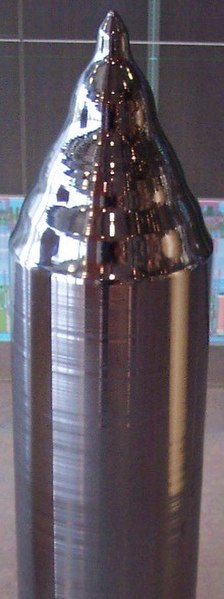Jan Czochralski was a Polish chemist who invented the Czochralski method, which is used for growing single crystals and in the production of semiconductor wafers. It is still used in over 90 percent of all electronics in the world that use semiconductors. He is the most cited Polish scholar.
Jan Czochralski ca. 1910
Opening a seminar in memory of Jan Czochralski organized by Polish Chemical Society and European Association for Chemical and Molecular Sciences (EuCheMS) in the Polish Senate (2013).
The Czochralski method, also Czochralski technique or Czochralski process, is a method of crystal growth used to obtain single crystals of semiconductors, metals, salts and synthetic gemstones. The method is named after Polish scientist Jan Czochralski, who invented the method in 1915 while investigating the crystallization rates of metals. He made this discovery by accident: instead of dipping his pen into his inkwell, he dipped it in molten tin, and drew a tin filament, which later proved to be a single crystal. The method is still used in over 90 percent of all electronics in the world that use semiconductors.
Crystal of Czochralski-grown silicon
Silicon crystal being grown by the Czochralski method at Raytheon, 1956. The induction heating coil is visible, and the end of the crystal is just emerging from the melt. The technician is measuring the temperature with an optical pyrometer. The crystals produced by this early apparatus, used in an early Si plant, were only one inch in diameter.
A puller rod with seed crystal for growing single-crystal silicon by the Czochralski method
Crucibles used in Czochralski method




